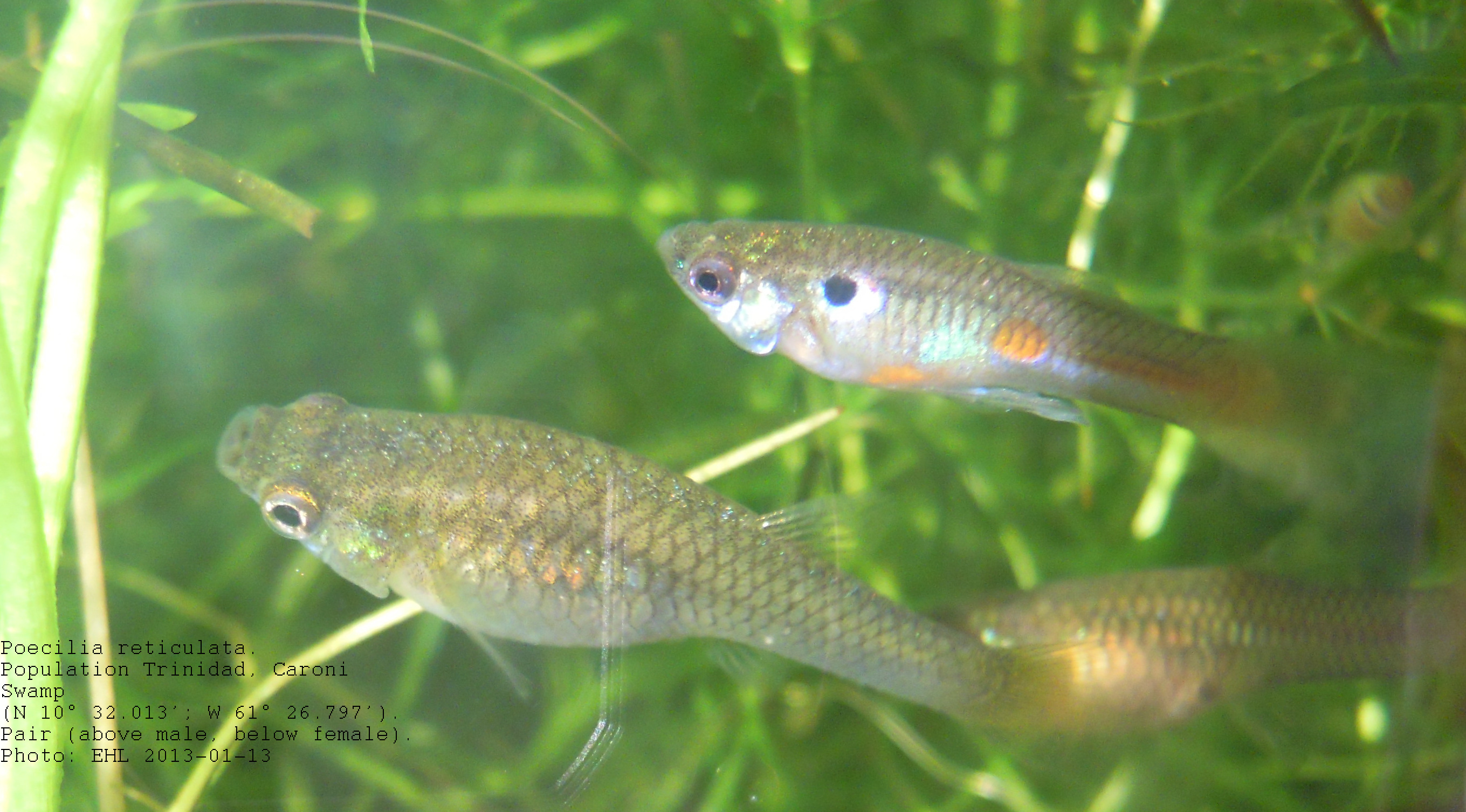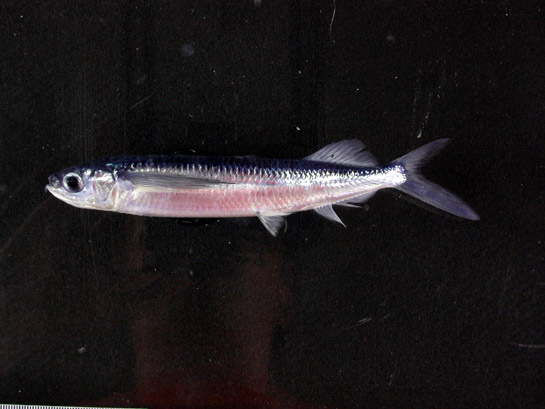|
Viviparous Halfbeak
Zenarchopteridae, the viviparous halfbeaks, is a family in the order Beloniformes. The Zenarchopteridae exhibit strong sexual dimorphism, practicing internal fertilisation, and in some cases ovoviviparous or viviparous (the family also includes oviparous species).Berra, T.M. (2001). ''Freshwater Fish Distribution.'' p. 320. Tan, H.H. & Lim, K.K.P. (2013). Three new species of freshwater halfbeaks (Teleostei: Zenarchopteridae: ''Hemirhamphodon'') from Borneo.' The Raffles Bulletin of Zoology 61(2): 735–747. The members in the family are mainly found in fresh and brackish water of tropical Asia and New Guinea, but the genus '' Zenarchopterus'' also includes marine species from the Indo-Pacific. Several, such as the wrestling halfbeak, have become commonly traded aquarium fish. Genera The following genera are classified within the family Zenarchopteridae * '' Dermogenys'' Kuhl & van Hasselt, 1823 * '' Hemirhamphodon'' Bleeker, 1865 * '' Nomorhamphus'' Weber & de Beaufo ... [...More Info...] [...Related Items...] OR: [Wikipedia] [Google] [Baidu] |
Henry Weed Fowler
Henry Weed Fowler (March 23, 1878 – June 21, 1965) was an American zoologist born in Holmesburg, Pennsylvania. He studied at Stanford University under David Starr Jordan. He joined the Academy of Natural Sciences in Philadelphia and worked as an assistant from 1903 to 1922, associate curator of vertebrates from 1922 to 1934, curator of fish and reptiles from 1934 to 1940 and curator of fish from 1940 to 1965. He published material on numerous topics including crustaceans, birds, reptiles and amphibians, but his most important work was on fish. In 1927 he co-founded the American Society of Ichthyologists and Herpetologists and acted as treasurer until the end of 1927. In 1934 he went to Cuba, alongside Charles Cadwalader (president of the Academy of Natural Sciences of Philadelphia), at the invitation of Ernest Hemingway to study billfishes, he stayed with Hemingway for six weeks and the three men developed a friendship which continued after this trip and Hemingway sent speci ... [...More Info...] [...Related Items...] OR: [Wikipedia] [Google] [Baidu] |
Johan Conrad Van Hasselt
Johan Conrad van Hasselt (occasionally Johan Coenraad van Hasselt; 24 June 1797 in Doesburg – 8 September 1823), was a Dutch physician, zoologist, botanist and mycologist. Conrad van Hasselt studied medicine at the University of Groningen. In 1820 he went on an expedition to the island of Java, then part of the colonial Dutch East Indies, with his friend Heinrich Kuhl, to study the fauna and flora of the island. They sailed from Texel on 11 July, stopping at Madeira, the Cape of Good Hope and Cocos Island and arriving in Batavia on December 1820. Kuhl died after eight months, van Hasselt continued the work for another two years before dying (like Kuhl) of disease and exhaustion. This followed a journey to Bantam. They sent the Museum of Leiden 200 skeletons, 200 skins of mammals from 65 species, 2,000 bird skins, 1,400 fish, 300 reptiles and amphibians, and many insects and crustaceans . Works * Heinrich Kuhl and Johan Conrad van Hasselt. 1820. Beiträge zur Zoologie und Ve ... [...More Info...] [...Related Items...] OR: [Wikipedia] [Google] [Baidu] |
Mosquitofish
The western Mosquitofish (''Gambusia affinis'') is a North American freshwater fish, also known commonly, if ambiguously, as simply Mosquitofish or by its generic name, ''Gambusia'', or by the common name gambezi. Its sister species, the eastern mosquitofish (''Gambusia holbrooki'') is also referred to by these names. Mosquitofish are small in comparison to many other freshwater fish, with females reaching a maximum length of and males a maximum length of . The female can be distinguished from the male by her larger size and a gravid spot at the posterior of her abdomen. The name "Mosquitofish" was given because the fish eats mosquito larvae, and has been used more than any other fishes for the biological control of mosquitoes. Gambusia typically eat zooplankton, beetles, mayflies, caddisflies, mites, and other invertebrates; mosquito larvae make up only a small portion of their diet. Mosquitofish were introduced directly into ecosystems in many parts of the world as a biocon ... [...More Info...] [...Related Items...] OR: [Wikipedia] [Google] [Baidu] |
Guppy
The guppy (), also known as millionfish and rainbow fish, is one of the world's most widely distributed tropical fish and one of the most popular freshwater aquarium fish species. It is a member of the family Poeciliidae and, like almost all American members of the family, is live-bearing. Guppies originate from northeast South America, but have been introduced to many environments and are now found all over the world. They are highly adaptable and thrive in many different environmental and ecological conditions. Male guppies, which are smaller than females, have ornamental caudal and dorsal fins. Wild guppies generally feed on a variety of food sources, including benthic algae and aquatic insect larvae. Guppies are used as a model organism in the fields of ecology, evolution, and behavioural studies. Taxonomy Guppies were first described in Venezuela as ''Poecilia reticulata'' by Wilhelm Peters in 1859 and as ''Lebistes poecilioides'' in Barbados by De Filippi in 1861. It ... [...More Info...] [...Related Items...] OR: [Wikipedia] [Google] [Baidu] |
Reed Bed
A reedbed or reed bed is a natural habitat found in floodplains, waterlogged depressions and estuaries. Reedbeds are part of a succession from young reeds colonising open water or wet ground through a gradation of increasingly dry ground. As reedbeds age, they build up a considerable litter layer that eventually rises above the water level and that ultimately provides opportunities in the form of new areas for larger terrestrial plants such as shrubs and trees to colonise. Artificial reedbeds are used to remove pollutants from greywater, and are also called constructed wetlands. Types Reedbeds vary in the species that they can support, depending upon water levels within the wetland system, climate, seasonal variations, and the nutrient status and salinity of the water. ''Reed swamps'' have 20 cm or more of surface water during the summer and often have high invertebrate and bird species use. ''Reed fens'' have water levels at or below the surface during the summer and ... [...More Info...] [...Related Items...] OR: [Wikipedia] [Google] [Baidu] |
Aquatic Plant
Aquatic plants are plants that have adapted to living in aquatic environments (saltwater or freshwater). They are also referred to as hydrophytes or macrophytes to distinguish them from algae and other microphytes. A macrophyte is a plant that grows in or near water and is either emergent, submergent, or floating. In lakes and rivers macrophytes provide cover for fish, substrate for aquatic invertebrates, produce oxygen, and act as food for some fish and wildlife. Macrophytes are primary producers and are the basis of the food web for many organisms. They have a significant effect on soil chemistry and light levels as they slow down the flow of water and capture pollutants and trap sediments. Excess sediment will settle into the benthos aided by the reduction of flow rates caused by the presence of plant stems, leaves and roots. Some plants have the capability of absorbing pollutants into their tissue. Seaweeds are multicellular marine algae and, although their ecologi ... [...More Info...] [...Related Items...] OR: [Wikipedia] [Google] [Baidu] |
Halfbeak
Hemiramphidae is a family of fishes that are commonly called halfbeaks, spipe fish or spipefish. They are a geographically widespread and numerically abundant family of epipelagic fish inhabiting warm waters around the world. The halfbeaks are named for their distinctive jaws, in which the lower jaws are significantly longer than the upper jaws. The similar viviparous halfbeaks (family Zenarchopteridae) have often been included in this family. Though not commercially important themselves, these forage fish support artisanal fisheries and local markets worldwide. They are also fed upon by other commercially important predatory fishes, such as billfishes, mackerels, and sharks. Taxonomy In 1758, Carl Linnaeus was the first to scientifically describe a halfbeak, ''Esox brasiliensis'' (now ''Hemiramphus brasiliensis''). In 1775 Peter Forsskål described two more species as '' Esox'', '' Esox far'' and '' Esox marginatus''. It was not until 1816 that Georges Cuvier created the ... [...More Info...] [...Related Items...] OR: [Wikipedia] [Google] [Baidu] |
Theodore Nicholas Gill
Theodore Nicholas Gill (March 21, 1837 – September 25, 1914) was an American ichthyologist, mammalogist, malacologist and librarian. Career Born and educated in New York City under private tutors, Gill early showed interest in natural history. He was associated with J. Carson Brevoort in the arrangement of the latter's entomological and ichthyological collections before going to Washington D.C. in 1863 to work at the Smithsonian Institution. He catalogued mammals, fishes and mollusks most particularly although maintaining proficiency in other orders of animals. He was librarian at the Smithsonian and also senior assistant to the Library of Congress. He was elected as a member of the American Philosophical Society in 1867. Gill was professor of zoology at George Washington University. He was also a member of the Megatherium Club at the Smithsonian Institution in Washington, D.C. Fellow members frequently mocked him for his vanity. He was president of the American Association f ... [...More Info...] [...Related Items...] OR: [Wikipedia] [Google] [Baidu] |
Bruce Baden Collette
Bruce Baden Collette (born March 13, 1934) is an American ichthyologist. Biography He was born on March 13, 1934, in Brooklyn, New York. He is the son of Raymond Hill Collette and Agnes Hellen (Lavsen) Collette. Publications * ''The diversity of fishes : biology, evolution, and ecology'' (with Gene S. Helfman and Douglas E. Facey); Malden (Mass.) : Blackwell science, cop. 2009. * ''Results of the Tektite Program: ecology of coral reef fishes'' (with Sylvia Alice Earle); Natural History Museum, Los Angeles County, 1972. - Taxon named in his honor *The[...More Info...] [...Related Items...] OR: [Wikipedia] [Google] [Baidu] |
Lieven Ferdinand De Beaufort
Lieven Ferdinand de Beaufort (March 23, 1879 in Den Treek, Leusden – 11 May 1968 in Amersfoort) was a Dutch biologist who, in 1903, participated in the North New Guinea Expedition. In the 1920s he was director of the Zoological Museum of Artis in Amsterdam and later zoogeography professor at the University of Amsterdam. Beaufort is commemorated in the scientific name of a species of lizard, ''Sphenomorphus beauforti'', which is a synonym of '' Sphenomorphus schultzei''. www.reptile-database.org. See also * :Taxa named by Lieven Ferdinand de Beaufort References SourcesProf. dr. L.F. de Beaufort, 1879 - 1968at the University of Amsterdam The University of Amsterdam (abbreviated as UvA, nl, Universiteit van Amsterdam) is a public research university located in Amsterdam, Netherlands. The UvA is one of two large, publicly funded research universities in the city, the other being ... ''Album Academicum'' website 1879 births 1968 deaths Dutch zoologists Universit ... [...More Info...] [...Related Items...] OR: [Wikipedia] [Google] [Baidu] |
Max Carl Wilhelm Weber
Max Carl Wilhelm Weber van Bosse or Max Wilhelm Carl Weber (5 December 1852, in Bonn – 7 February 1937, in Eerbeek) was a German-Dutch zoologist and biogeographer. Weber studied at the University of Bonn, then at the Humboldt University in Berlin with the zoologist Eduard Carl von Martens (1831–1904). He obtained his doctorate in 1877. Weber taught at the University of Utrecht then participated in an expedition to the Barents Sea. He became Professor of Zoology, Anatomy and Physiology at the University of Amsterdam in 1883. In the same year he received naturalised Dutch citizenship. His discoveries as leader of the Siboga Expedition led him to propose Weber's line, which encloses the region in which the mammalian fauna is exclusively Australasian, as an alternative to Wallace's Line. As is the case with plant species, faunal surveys revealed that for most vertebrate groups Wallace’s line was not the most significant biogeographic boundary. The Tanimbar Island group, and ... [...More Info...] [...Related Items...] OR: [Wikipedia] [Google] [Baidu] |







